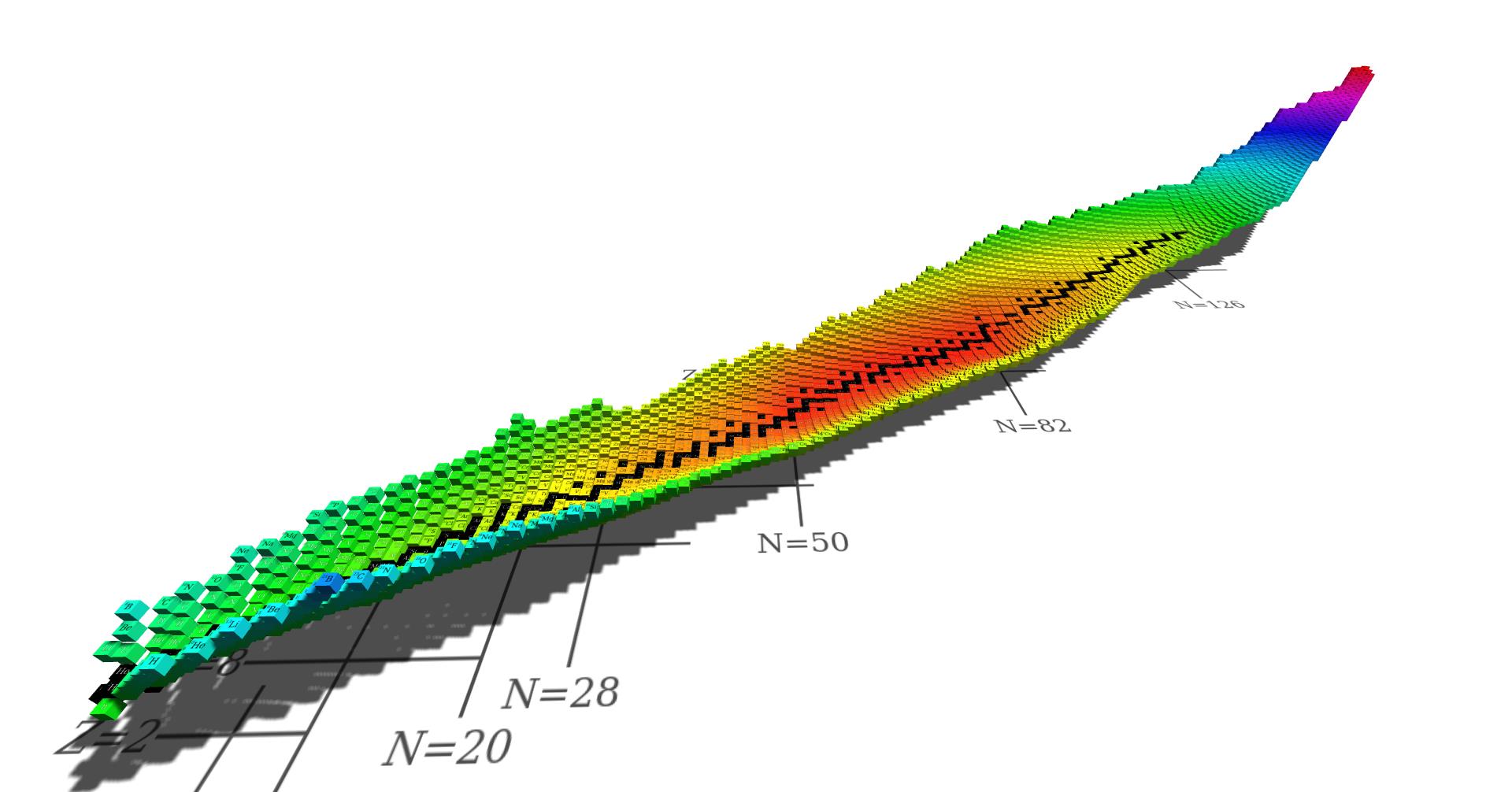NucleAI project
NucleAI project
This Web site will offer libraries of computed data resulting from the application of artificial intelligence (AI) methods to the nuclear quantum many-body problem.
To determine the properties of the nucleus, the fundamental observables are in particular the mass (binding energy), the moments of the charge and matter distributions (nuclear radii), the characteristics of the excited states (energy, spin, parity).
The calculations of these observables are obtained from high-performance models which predict the properties over a large part of the nuclear chart: the techniques of the energy density functional (EDF) and the developments of ab initio calculations (models built on interactions between nucleons extracted from the principles of quantum chromodynamics).
The techniques for solving the nuclear quantum many-body problem are based on the Hartree-Fock Bogoliubov-type equations. The complexity of the calculations requires the use of advanced techniques using algorithms in neural networks, called "machine learning". These artificial intelligence methods make it possible to optimize calculation times and make the results available in record time (ms) for the whole nuclear table. It therefore becomes easy to quickly vary the parameters of the model in order to have a wide range of data, whatever the nucleus selected on the nuclear chart.
This site conceived for nuclear physicists is under development, with the main objectives of being able to:
- carry out comparisons between theories, between the results available on the site and the existing calculations, which makes it possible to discuss the theoretical uncertainties inherent in the modeling of the nuclear problem;
- compare the theoretical values and the existing experimental data;
- obtain ranges of theoretical values as a tool for preparing future experiments.


